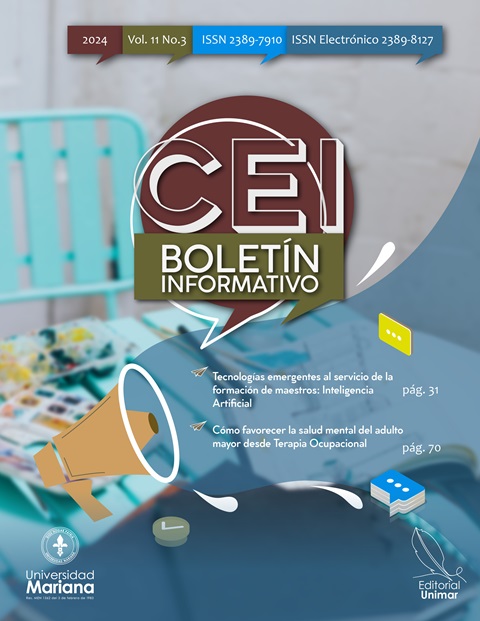The Cervical cancer prevention education
Cervical cancer prevention
Keywords:
cancer, uterineAbstract
If there is a public health problem due to the high incidence, uterine cancer is identified as a predominant disease and the main cause of falls among women; Despite the importance of the different activities aimed at preventing this disease and which became strategies prior to the World Health Organization (WHO), vaccination against the HPV human papilloma virus and screening tests are part of the initiation of activities that reduce the risk of pre-cancer and cancer, not being sufficient before testing for the detection and treatment of preventive pre-cancerous lesions; however, do not use preservatives, contracting sexually transmitted infections, having poorly established sexual relationships with different people, using contraceptive hormones and tobacco are considered risk factors (Reyes et al., 2022). Overall, this disease contains risk factors that cannot be modified, such as parental and family history, however, there are several risk factors that are limited in their probability and can increase the event, when considering them, it is important to generate an change by adopting healthy lifestyles and a balanced diet that can facilitate temperature prevention and detection (Ayala et al., 2022).
Author Biography
María Constanza Pérez Basante, Universidad Mariana
Directora de Regencia de Farmacia, Universidad Mariana
References
Ayala, M. B., Vester, J. M. y Rodríguez, M. I. (2022). Experiencias personales, familiares y sociales de mujeres que padecen cáncer de cuello uterino. Paraguay 2021. Revista Científica Estudios e Investigaciones, 11(1), 70-84. https://doi.org/10.26885/rcei.11.1.70
Buitrago, L. A., Gamboa, O. A. y Hernández, J. A. (2022). Efectos de edad, periodo y cohorte en la mortalidad por cáncer de cuello uterino en Colombia entre 1985 y 2014. Colombia Médica, 53(1), e2074873. https://doi.org/10.25100/cm.v53i1.4873
Gonçalves, T., Pereira, B., Lira, A. B., Alves, I. L., De Abreu, R. C. y Costa, M. (2022). Educational actions for the prevention of cervical cancer: discourse of quilombola women. Revista de Atenção à Saúde, 20(71), 143-151. https//doi.org/10.13037/ras.vol20n71.8254
Montes, J. P. (2024). Accesibilidad a los programas de salud para detección temprana y protección específica en mujeres de 18 a 59 años en la comuna 1. Montería-Colombia, 2022 [Tesis de maestría, Universidad de Córdoba]. https://repositorio.unicordoba.edu.co/entities/publication/8f14b18a-64fe-427e-91e6-e7fd47aa4e5b
Organización Mundial de la Salud (OMS). (2023). Síntesis de evidencia y recomendaciones: directriz para el tamizaje, la detección y el tratamiento del cáncer de cuello uterino. Revista Panamericana de Salud Pública, 47 (1). https://doi.org/10.26633/rpsp.2023.72
Ortiz-Segarra, J., Vega-Crespo, B., Neira, V. A., Mora-Bravo, L., Guerra-Astudillo, G., Ortiz-Mejía, J. y Pérez-Paredes, V. (2021). Conocimiento y prácticas de prevención de cáncer de cuello uterino en mujeres con lesiones histopatológicas. Cuenca, Ecuador 2021. Maskana, 12(2), 4-10. https://doi.org/10.18537/mskn.12.02.01
Quispe, Y. L. (2024). Actitudes y prácticas preventivas frente al cáncer de cuello uterino en mujeres adultas del Asentamiento Humano “Dios Te Ama” Pisco 2022 [Tesis de pregrado, Universidad Privada San Juan Bautista]. https://repositorioslatinoamericanos.uchile.cl/handle/2250/9483496?show=full
How to Cite
Downloads
Downloads
Published
Issue
Section
License
Copyright (c) 2024 Boletín Informativo CEI

This work is licensed under a Creative Commons Attribution 4.0 International License.

Boletín Informativo CEI by Universidad Mariana is distributed under a Creative Commons Attribution-NonCommercial-NoDerivatives 4.0 International License.






